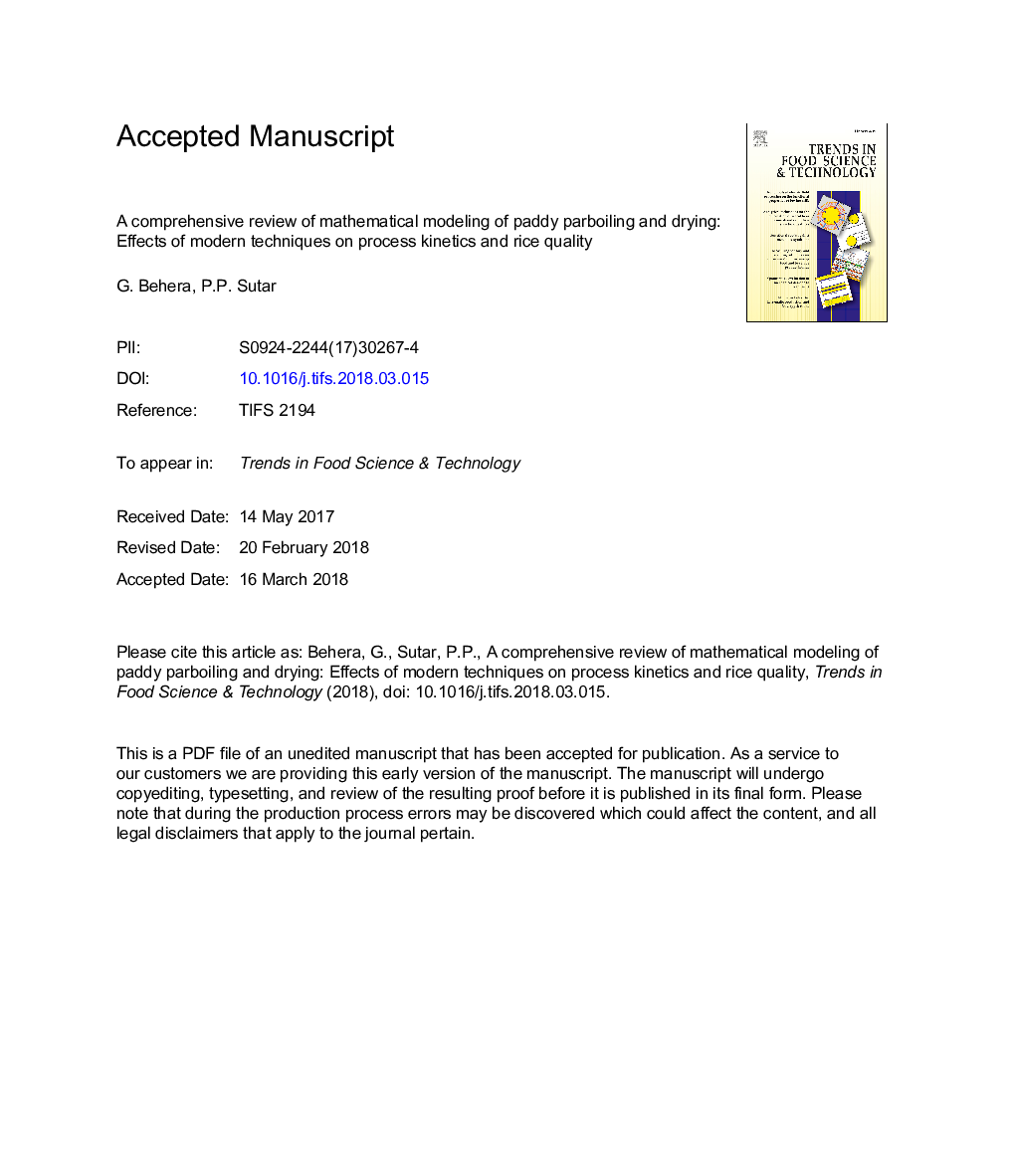| Article ID | Journal | Published Year | Pages | File Type |
|---|---|---|---|---|
| 8428356 | Trends in Food Science & Technology | 2018 | 70 Pages |
Abstract
Hot water soaking (40-80â¯Â°C), single steaming, double steaming, pressure cooking and microwave heating are used to parboil or gelatinize the starch in rice. Also, acids/alkaline solutions can gelatinize the rice starch. The open sun (2-4 days), hot air (50-80â¯Â°C), superheated steam, vacuum, infrared (0·167-0·625â¯Wâ¯cmâ2), and microwave drying (2.45â¯GHz) are employed to dry the parboiled paddy up to 12-14% moisture content (db). Modelling and simulation tools have been used to study these complex processes during paddy hydration, starch gelatinization and drying. Fick's law of diffusion, Peleg model, and exponential equation are used to describe the water sorption in paddy. Arrhenius equation, Ozawa Model and Kissinger equation are useful in understanding the starch gelatinization kinetics. Several empirical and semi-empirical models are used to study the drying kinetics of gelatinized paddy. In drying, the models given by Page, Henderson and Pabis and Newton describe the drying kinetics better than other models. The effects of modern methods of the parboiling and drying can be understood from the kinetics and other constants of the models as well as from the change in the microstructure of starch that takes place in the process of gelatinization. The recent developments on the effects of modern methods of hydration, parboiling and drying with limitations have also been focussed in the manuscript. Because of the concerns of wastewater generation during paddy hydration and parboiling, new techniques need to be developed for reducing wastewater generation and its treatment.
Related Topics
Life Sciences
Agricultural and Biological Sciences
Food Science
Authors
G. Behera, P.P. Sutar,
